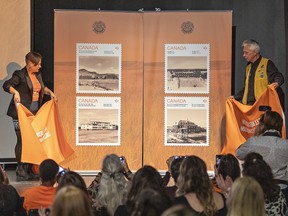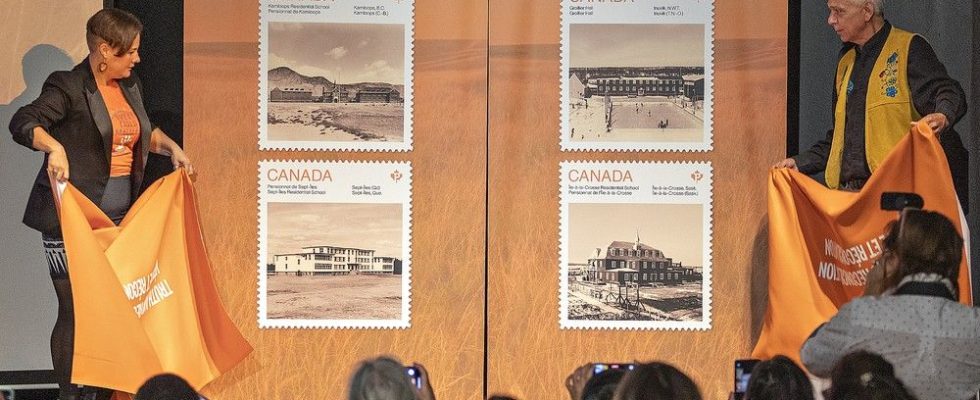
Four new postage stamps – the second issue in the annual Truth and Reconciliation series — were unveiled by Canada Post on Wednesday in Brantford.
Advertisement 2
Article content
The ceremony was held at the Woodland Cultural Center adjacent to the Mohawk Institute, a former residential school that operated until 1970.
Article content
“With the release of Canada Post’s 2023 commemorative stamp in time for National Day of Truth and Reconciliation, we have the opportunity to reflect on this history and draw the attention of Canadians to the importance of the history of our site, the longest-running residential school in Canadian history,” said Heather George, executive director of the Woodland Cultural Center. “As Mohawk Institute Residential School survivor Tony Bomberry reminds us, residential schools are the only school where you didn’t graduate. You survived.”
George said Truth and Reconciliation is not easy and will take time but is possible, providing there’s a willingness to understand the hurt of the past and see the possibility of a new relationship.
Advertisement 3
Article content
“Truth requires a recognition of this dark history and its ongoing impacts,” she said.
Dawn Hill of Six Nations, a 74-year-old survivor of the Mohawk Institute residential school, shared how she came to the “Mush Hole” in 1957 at the age of seven with her six siblings.
“We didn’t get out of here until 1961,” Hill said. “The worst impact for me was being taken away from your family, but also your community.”
She said the environment at the residential school was “very hostile, very aggressive, and as kids that’s what you learned.”
Hill said she was pleased to see the residential schools featured on the new issue of stamps this year.
“It’s really having an impact on Canada,” she noted. “Not just First Nations, Inuit, and Metis people but every member of society. I was really impressed with it.”
Advertisement 4
Article content
Dale Leclair, director of Indigenous and Northern Affairs for Canada Post, said the stamp program is committed to listening to Indigenous voices and to use the stamp as a vehicle – reaching 17 million homes in Canada each day — for survivors to share the truth of their experiences.
“We need to hear their history, learn about the pain they experienced in residential schools, and we need to reflect and learn and build on the incredible strength they bring to our community and our people,” he explained. “The stamp program is an important way in which we can engage Canadians who have an important role to play in reconciliation.”
Leclair told the crowd he and his wife toured the Mohawk Institute earlier in the day.
“The feeling for the first time going into the school gives you such a heavy heart, and heavy mind. We all need to experience that.”
The stamps became available at postal outlets across the country on September 28.

Article content

Comments
Postmedia is committed to maintaining a lively but civil forum for discussion and encourages all readers to share their views on our articles. Comments may take up to one hour for moderation before appearing on the site. We ask you to keep your comments relevant and respectful. We have enabled email notifications—you will now receive an email if you receive a reply to your comment, there is an update to a comment thread you follow or if a user you follow comments. Visit our Community Guidelines for more information and details on how to adjust your email settings.